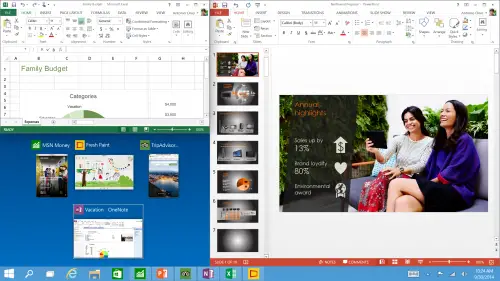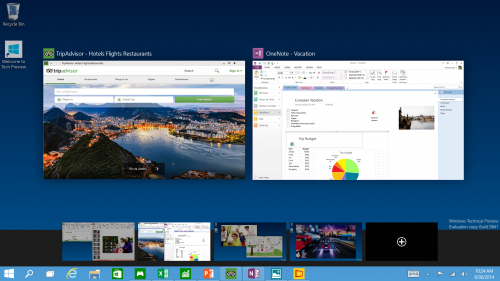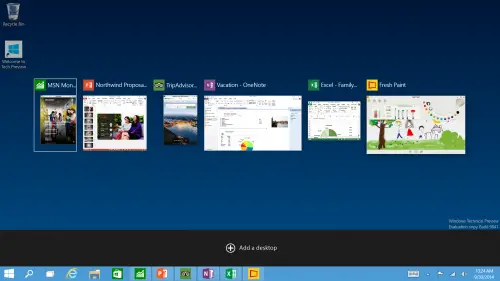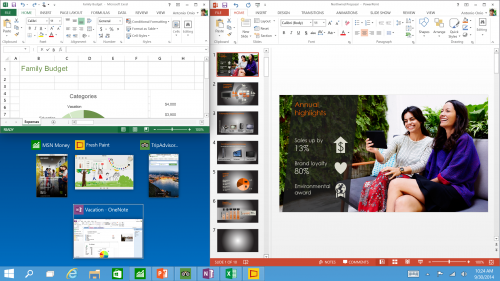Where did Windows 9 go
There were many reports in the market sharing various titles for this new OS. They referred to it as “Windows vNext”, “Threshold” (The official internal development codename), “Windows 9” (logical) and even “Windows TH”, Windows 365 or simply that it would be called just Windows. But, Microsoft halted these rumors and presented its new OS as the “Windows 10”. After analyzing the last few Windows names, it was logical to conclude that Microsoft would be calling it Windows 9, but to everyone’s surprise, Microsoft broke this chain. Many people are curious to know that where is Windows 9? While Microsoft has not commented officially, Microsoft said: It appears that Microsoft wanted to signify that this release would be the last ‘major’ Windows update, since in future, the company is planning to make smaller updates regularly to the Windows 10 code base. If you remember, the software giant had skipped a version with Microsoft Office too!
Windows 10 features and highlights
- Compatibility & One App Store for all Windows 10 will be compatible with all the devices such as Xbox, PCs, smartphones, tablets or other tiny gadgets that run the Windows Operating System. Further, Microsoft has planned to deliver a Unified App Store for developers so that they can easily create and deploy their applications across multiple device types. Now, it will become very easy for the consumers also to discover, purchase or update the apps. Apart from Modern UI or Universal apps, the Windows Store will also support desktop apps, as well as other digital content.
- Modern Business Specific Microsoft with its Windows 10 has tried to reduce the business complexities regarding the security, identity and information protection by offering better solutions to such problems. Now, the organizations can also customize an app store according to their needs and environment. This unique app store will support volume app licensing, flexibility distribution and reuse of licenses when necessary. Read more at Improvements in Windows 10 for Business and Enterprise.
- The Start Menu is Back
Windows 10 brings back the Start Menu similar to the Windows 7 and enables the users to access their frequently used files and functions in a go. Further, it comes with a new space for personalization of programs, favorite apps, people and websites – and includes Tiles as well. 4. Everything runs in a window
Windows Store apps now opens up in the form of a Window and allows the users to resize or move them around like any other program window. Users can even maximize, minimize or close the app with a click on the title bars at the top of the app window. They are being now called Universal Apps. 5. Multiple Desktops
It’s now easy to create and switch among distinct desktops while working to avoid overlapping of several apps or files on a single desktop. 6. Faster File Search File Explorer now displays the recently as well as frequently visited files and folders, thereby making it easier to find your files on which you were working. 7. New Task View Button
Addition of a new Task View Button on the task bar enables the users to view all the open apps and files collectively in one view. It allows quick switching as well as one-touch access to any of the created desktops. 8. Snap Enhancements
Includes a new quadrant layout which allows at most four apps to be snapped on the same screen. In addition, Windows will also display other running apps and programs for additional snapping. Even, it will also provide smart suggestions to fill the available screen space with the other open apps. Snap Assist is a new feature on Snap. 9. The Command Prompt will get common keyboard shortcuts. 10. Continuum is a new technology that automatically senses how you are using your device and adapts the UI accordingly. Useful, when you are using your Surface Pro as a laptop or as a tablet. 11. Edge, the new browser will be introduced, along with new security features. 12. Integration with Microsoft’s digital assistant – Cortana. 13. Music and playlist integration in OneDrive. 14. Universal apps that work on Windows 10 PC, Windows 10 Mobile and XBOX One. An XBOX App for Streaming of live games to a PC. 15. Unified messaging using Skype Integration 16. A new Notification Center 17. Touch optimized Office applications 18. Windows Hello and Passport for personalized authentication without the use of passwords. 19. Device Guard for protecting devices against malicious applications. 20. Support for media formats such as FLAC and MKV
Windows 10 Hardware requirements
The hardware requirements would remain the same as for Windows 8.1.
Processor: 1 GHz or faster with support for PAE, NX, and SSE2RAM: 1 GB (32-bit) or 2 GB (64-bit)Hard disk space: 16 GB (32-bit) or 20 GB (64-bit)Graphics card: Microsoft DirectX 9 graphics device with WDDM driver.
Windows 10 in action video Microsoft has also released an official video for the public under the tagline “Introducing Windows 10 – The best Windows yet”. This video is presented by Joe Belfiore, the current Corporate Vice President at Microsoft Operating Systems Group, showing a glimpse of the new Windows operating system. Refer this Checklist for smooth installation of Windows 10 Technical Preview .
Windows 10 availability
Microsoft has planned to release the “Windows 10 Technical Preview” today as part of the “Microsoft’s Insider Program”. The download will enable the developers as well as the enthusiasts to get their hands dirty with this new OS. For now, the preview will be available for the laptops and desktops only and later the tech-giant will release a version for servers also. Microsoft also confirmed that the full version of Windows 10 will globally release in mid-2015.
Windows 10 pricing
Unfortunately, Microsoft hasn’t revealed any info regarding the pricing of Windows 10, but, we hope to hear something from the Redmond at its next BUILD conference in April 2015. Now read: Windows 10 under the hood features. So, stay tuned with us, to know more about Windows 10! Read our Windows 10 Review for more!



